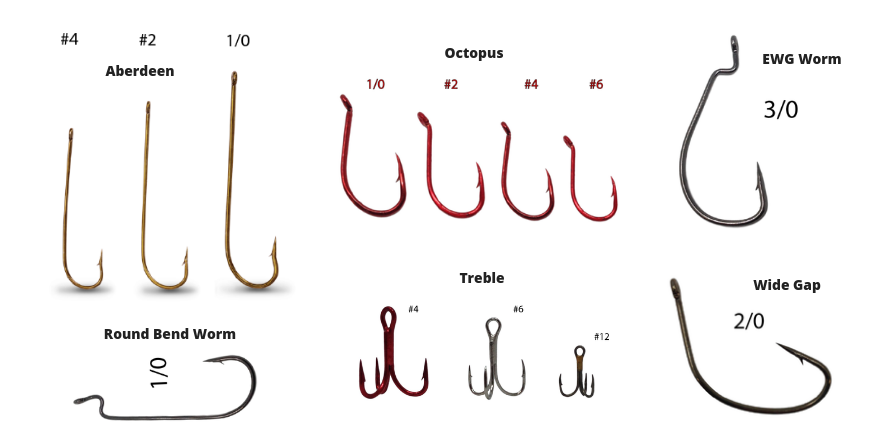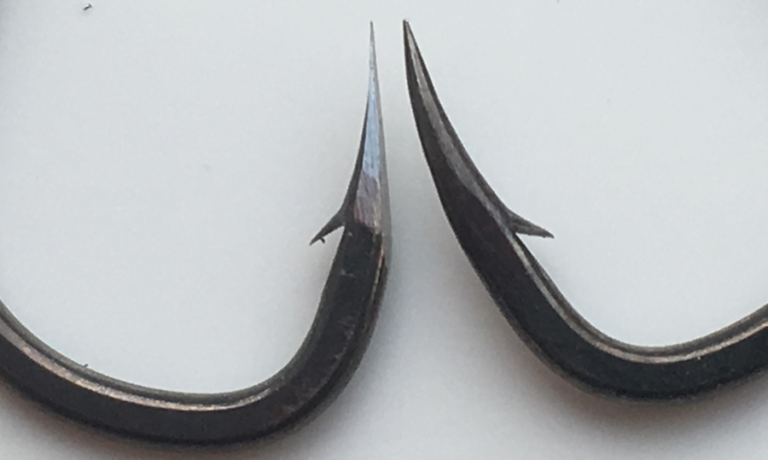How Do Hook Sizes Work

Hook sizes in fishing are standardized by numbers; smaller numbers mean larger hooks and vice-versa. The system includes odd and even numbers, with the addition of “aughts” for larger hooks.
Understanding hook sizes is crucial for successful fishing, catering to the type of fish you’re aiming to catch. The size chart ranges from the smallest, a size 32, to the largest, a size 19/0. Manufacturers follow this standard, although slight variations may exist.
Anglers must select the appropriate hook for their target species, considering the hook’s ability to fit into the fish’s mouth without being too small to lose the catch or too large to deter the fish. Learning how to match the hook size with the bait and the targeted fish species can significantly improve your chances of a good catch and contributes to responsible fishing practices by reducing harm to the fish.
Deciphering Hook Size Numbers
Hook sizes can be confusing at first glance. Larger numbers mean smaller hooks, which seems backwards. For example, a size 32 hook is tiny. It’s used for minute fish. As numbers decrease, hooks get bigger. A size 1 hook is much larger than a size 32.
When you reach a size 1 hook, the scale changes. Above size 1, hooks are termed as 1/0, 2/0, and up, often referred to as ‘aughts’. The more zeros, the larger the hook. A 7/0 hook is perfect for large fish, like tuna and marlin.
| Hook Size | Common Use |
|---|---|
| 32-1 | Small to medium fish |
| 1/0-7/0 | Large fish like tuna |
The scale is simple once you understand it. Remember, a hook’s usage depends on its size. Select the right hook based on the fish you’re targeting.

Credit: www.reddit.com
Types Of Fishing Hooks
Fishing hooks come in various types based on the number of points they have. Single hooks have one point, double hooks have two points, and treble hooks feature three points. Each type serves a different purpose for anglers.
Specialized hooks exist for catching certain fish species. Sizes and shapes vary to suit the fish’s mouth. This ensures a good catch without harming the fish. Always match the hook to the target species to increase success rates.
Hook Size Versus Fish Size
Selecting the right hook size is critical for successful fishing. The size of the hook should match the size of the target fish.
- Small hooks are for small fish like panfish.
- Medium hooks work well for bass or walleye.
- For big fish like catfish or pike, use large hooks.
Remember the numbers: Smaller numbers mean bigger hooks. For instance, a size 3/0 (read as “three aught”) is larger than a size 2.
Little hooks will not catch big fish. Big hooks can miss small fish. Getting the size right makes a big difference. Some people think one size works for all. This is not true. Each fish species has an ideal hook size.

Credit: tailoredtackle.com
Anatomy Of A Fishing Hook
Fishing hook design directly impacts the hook size and how it can be used. A hook’s size is measured by its gape, which is the distance between the shank and the point. The length of the shank, and the bend’s shape also play roles in defining the hook’s size. Larger hooks are used for bigger fish, with a wider gape to secure the fish. Smaller hooks work better for small fish.
Barb size and the point’s sharpness are crucial for the hook’s performance. Remember, a sharper point and a smaller barb help in quicker penetration. But they should match the hook size to balance catching ability with fish safety.
Measuring Hook Sizes
Fishing enthusiasts need the right tools to measure hook sizes accurately. Simple rulers or special gauges crafted for hooks are perfect. Experts often use these to determine the precise size. A reliable digital caliper can also serve for more detailed measurements. These tools ensure that you get the most accurate hook size.
Variations in sizes can occur between different countries. A size 14 in the US might not be the same in the UK. Anglers should check the manufacturer’s charts. This can help match the right hook to the desired fishing conditions. See the table below for size comparisons.
| US Size | UK Size | Japan Size |
|---|---|---|
| 8 | 4.5 | 7 |
| 14 | 8.5 | 13 |
| 22 | 19.5 | 21 |

Credit: tailoredtackle.com
Choosing The Right Hook For The Job
Understanding hook sizes is vital for successful fishing. Two main factors are:
- Species of Fish: Different fish need different hook sizes.
- Type of Bait: The bait size should match the hook size.
Smaller hooks are marked with larger numbers, like #32. Larger hooks have smaller numbers, like #1. As hooks get bigger, numbers turn to aughts (0).
A #4 is perfect for small fish like trout. A 4/0 hook is great for larger fish like salmon.
Testing different hooks can improve your catch. Start small and go bigger until you find the best fit. Keep notes on what works!
Frequently Asked Questions On How Do Hook Sizes Work
Is A #2 Or #4 Hook Bigger?
A #2 hook is larger than a #4 hook. Hook sizes decrease as the numbers increase.
How Do You Determine Hook Size?
To determine hook size, compare your hook to a sizing chart, consider the species and size of the fish targeted, and assess the type of bait used. Match hook size with bait size for optimal results. Choose smaller hooks for subtle presentations and larger ones for bigger fish.
Is A 1 0 Or 3 0 Hook Bigger?
A 3/0 hook is larger than a 1/0 hook. Hook sizes with a larger number followed by a zero indicate bigger hooks in fishing gear.
Which Hook Is Bigger 8 Or 10?
In hook sizing, a size 8 hook is larger than a size 10 hook. Smaller numbers indicate bigger hooks in fishing equipment.
Conclusion
Selecting the right hook size is crucial for successful fishing, striking a balance between bait presentation and target species. With practice, anglers can master this art, boosting their catch rates. Remember to match hook to bait and fish, setting the stage for those thrilling moments when you reel in.
Keep casting, keep learning, and enjoy the bounty of the waters.


